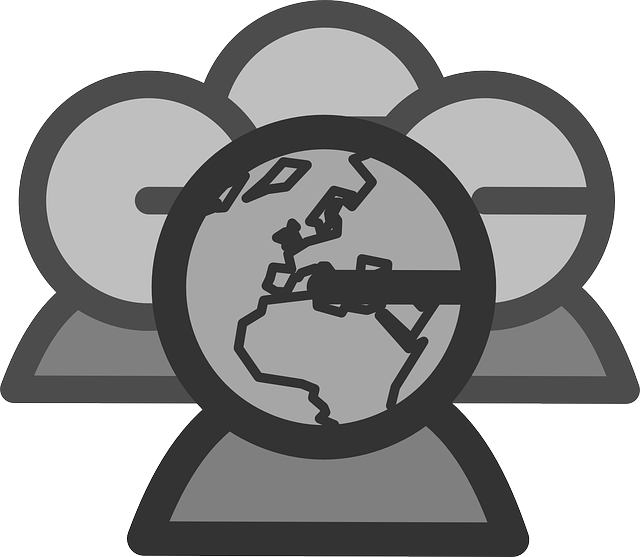العلاقات الأفغانية الصينية
|
أفغانستان |
الصين |
|---|---|
العلاقات الأفغانية الصينية سادها الوئام والصداقة عبر التاريخ، بعلاقات تجارية بين المنطقتين تعود إلى أسرة هان لمرور طريق الحرير عبر أفغانستان.
منذ إنشاء دولة أفغانستان الحديثة (1709)، كانت العلاقات في الغالب دافئة وودية، بما في ذلك خلال معظم القرن العشرين، حيث قاتل البلدان معًا ضد اليابان في الحرب العالمية الثانية، وبدعم من الصين بتقديم مساعدات اقتصادية وقروض بملايين الدولارات لتطوير أفغانستان خلال فترة الحرب الباردة المبكرة. توقفت هذه الصداقة لفترة وجيزة بعد الانقسام الصيني السوڤيتي والغزوالسوڤيتي لأفغانستان (1979)، مع قيام روسيا بتنصيب أنظمة مؤيدة للسوڤيت ومعادية للصين في أفغانستان. ومع ذلك، فمنذ انسحاب القوات السوڤيتية والوفاق بين روسيا والصين، تحسنت العلاقات الصينية الأفغانية بشكل ملحوظ في القرن الحادي والعشرين.
منذ غزوالولايات المتحدة الذي بدأ الحرب في أفغانستان (2001-الحاضر)، كانت المشاركة السياسية الصينية في البداية محدودة إلى حد ما، لكن العلاقات التجارية لا تزال مستمرة مع الصين كأكبر شريك تجاري لأفغانستان ، والصين تقدم لأفغانستان ملايين الدولارات من المساعدات طوال فترة الحرب. نفوذ الصين ودور الدبلوماسية المكوكية في أفغانستان شهدا نمواً على مر السنين، ويمكن للصين المساعدة في التوسط للتوصل إلى سلام in the war-torn country.
التاريخ (هان إلى تشينگ)
كما احتلت أسر حاكمة صينية مختلفة أجزاءً من أفغانستان وآسيا الوسطى حول حدودها الحالية. وكانت أفغانستان تاريخياً في قلب طريق الحرير المربح.
أسرة هان
The Han defeated the Dayuan in the Han-Dayuan war, thereby establishing Chinese control over parts of northern Afghanistan. Later the Han dynasty set up the Protectorate of the Western Regions to protect Silk Road trade through Central Asia. In antiquity, the region that is now Afghanistan was known for its devotion to Buddhism, which had been founded in India in the 5th century BC. Chinese records from the Han dynasty refer to Kabul as "Kao-fu", which is described as a wealthy cite located in the Hindu Kush mountains on a strategic location on the trade routes linking Central Asia to India. A Buddhist monk from what is now Afghanistan arrived in China in 2 BC and converted the first Chinese to Buddhism. Afghanistan was often visited by Chinese Buddhist pilgrims on their way to India in antiquity, and Buddhist sites such as Balkh and the Buddhas of Bamyan attracted many Chinese visitors. Chinese records credit craftsmen from Afghanistan with producing the first glass in China between 424-428 AD, through archaeological evidence suggests that glass was being produced earlier in China.
أسرة تانگ
In 605, emissaries from what is now Afghanistan arrived in Luoyang (at the time China's capital) to pay tribute to the Emperor in exchange for greater rights to trade with China. When the Tang dynasty was established in 618 AD, the claim to see Afghanistan as part of China's sphere of influence was inherited, a claim that successive Tang emperors were willing to enforce via military means.
During the Tang dynasty parts of Afghanistan were under the control of China's Protectorate General to Pacify the West. In 659, Soghd and Ferghana, along with cities like Tashkent, Samarkand, Balkh, Herat, and Kabul, became part of the protectorate under Emperor Gaozong. Afghanistan's Herat and Uzbekistan's Bukhara and Samarkand became part of the Tang protectorate. The Indian historian K. P. S. Menon wrote about the Chinese "performed the remarkable feat of sending an army of 100,000 men which marched up the Pamirs from Kashgar" and then crossed Afghanistan to occupy the Hunza Valley in what is now Pakistan.
The defeat of the Western Turks and the defeat of the Sassanids by the Arabs had facilitated the Chinese expansion under Emperor Gaozong into Herat, northeastern Iran and Afghanistan (Tukharistan), Bukhara, Samarkand, Tashkent, and Soghdiana, which previously belonged to the western Turks.
During the Tang dynasty, a period of prosperity and wealth that many Chinese see as one of the highlights of their history, trade flourished along the Silk Road between Afghanistan and China. The Chinese Buddhist monk Xuanzang passed through Afghanistan on his way to India and described with awe his wonder at viewing the Buddhas of Bamyan. Religions such as Nestorian Christianity first reached China in the Tang dynasty via Afghanistan, to be followed later by Islam.
الامبراطورية المنغولية
Both regions were briefly unified under the Mongol empire. This also contributed to the sustenance and growth of the Silk Road.
طريق الحرير
Trade relations between Afghanistan and China mostly involved trade of fruit and tea via caravans through Xinjiang and the Wakhan Corridor on the border between the two countries. Buddhist monks from the area of what is now Afghanistan were involved in the Silk Road transmission of Buddhism to Han dynasty China. Faxian traveled to Afghanistan in the 5th century. In the 21st century, China and Afghanistan are making efforts to revive a New Silk Road through the Belt and Road Initiative.
أسرة تشينگ
هذا القسم فارغ. بإمكانك المساعدة بأن تضيف إليه. (يونيو2019)
|
القرن العشرون
الحرب العالمية الثانية
حارب المسلمون الصينيون اليابان في الحرب العالمية الثانية. ولكسب الدعم الحربي للصين من الدول الإسلامية، زار المسلم الهوي ما فوليانگ (馬賦良) والمسلم الأويغوري عيسى يوسف ألپتكين كلاً من مصر وسوريا وهجريا في 1939. وقد ناقش الزعيمان الهنديان طاغور وغاندي والزعيم الپاكستاني جناح الحرب مع وفد مسلمي الصين بقيادة ما فوليانگ. وفي هجريا، التقى عصمت إينونوبالوفد المسلم الصيني. Newspapers in China reported the visit. وكان ما فوليانگ وعيسى ألپتكين يعملان لصالح ژوجياهوا.
قصف المسلمين الصينيين بالطائرات اليابانية تناقلته الصحف في سوريا. أفغانستان وإيران والعراق وسوريا ولبنان كانوا محطات في جولة الوفد المسلم الصيني. وقد التقى وزير خارجية ورئيس وزراء ورئيس هجريا الوفد المسلم الصيني بعد وصولهم عبر مصر في مايو1939. وقد التقى غاندي وجناح الوفد المسلم الصيني وقاما بإدانة اليابان.
مطلع الحرب الباردة (قبل الغزوالسوڤيتي)
The People's Republic of China established diplomatic relations with the Kingdom of Afghanistan on January 20, 1955. Abdul Samad was the first Afghan Ambassador posted to Peking in 1955. Afghanistan was also one of the first countries to recognize the PRC.
Premier Zhou Enlai and Vice Premier He Long visited Afghanistan in January 1957. This was the first ever visit taken by Chinese leadership to Afghanistan in the history of Sino-Afghan relations. During the visit, the Chinese Premier and Vice Premier met with King Mohammad Zahir Shah of Afghanistan, and held respective talks with Prime Minister Mohammad Daud Khan, Vice Prime Minister Ali Mohammad and Vice Prime Minister and Foreign Minister Mr. Mohammad Naim. The Chinese Premier's visit to Afghanistan enhanced mutual understanding between the two countries and laid a solid foundation for the development of friendly relations between China and Afghanistan. In October 1957, Prime Minister Mohammad Daud of Afghanistan visited China under China's invitation. During the visit, he held meetings with Chairman Mao Zedong, Vice Chairman Zhu De and Chairman Liu Shaoqi of the Standing Committee of the National People's Congress of China.
On 22 November 1963 Beijing, China and Afghanistan signed the Boundary Treaty. This treaty settled the territorial dispute over the Afghan-controlled Wakhan on the border between Badakhshan Province in Afghanistan and the Xinjiang Uyghur Autonomous Region in China. The China-Afghanistan border is 92.45 kilometers long.
الغزوالسوڤيتي لأفغانستان (1979)
On 27 December 1979, Soviet troops were deployed in Afghanistan. On December 30, Chinese government made announcement condemning the Soviet military invasion, and refused to recognize the Soviet-backed Karmal government. The official relationship was stopped, and the Chinese embassy was degraded to representative office, and only dealt with consular and visa issues.
During the Sino-Soviet split, strained relations between China and the USSR resulted in bloody border clashes and mutual backing for the opponent's enemies. China and Afghanistan had neutral relations with each other during the King's rule. When the pro-Soviet Afghan Communists seized power in Afghanistan in 1978, relations between China and the Afghan communists quickly turned hostile. The Afghan pro-Soviet communists supported China's then-enemy Vietnam and blamed China for supporting Afghan anticommunist militants. China responded to the Soviet war in Afghanistan by supporting the Afghan mujahideen and ramping up their military presence near Afghanistan in Xinjiang. China acquired military equipment from America to defend itself from Soviet attack.
Soviet withdrawal from Afghanistan was one of the conditions pushed by China for any détente in Sino-Soviet relations. China saw the Soviet presence as a regional threat to itself (to prevent the USSR from encircling China) and a threat to its ally Pakistan. With possible United States support, China supplied weapons to Afghan guerrillas against the Soviet puppet government.
بعد انهيار الاتحاد السوڤيتي (1990)
In November 2000, China's then ambassador to Pakistan, Lu Shulin, became the first senior representative of a non-Muslim country to meet with Mullah Omar.
القرن 21
For the past two decades, China has kept a low profile in Afghanistan, focusing more on resource and material mining than on peace brokering. However, since 2014 China has assumed an increased responsibility in maintaining regional stability.
الحرب الأمريكية الأفغانية (منذ 9/11)
After the fall of the Taliban regime after the United States intervention in 2001, relations between China and Afghanistan had greatly improved and were reestablished. In December 2001, China sent to Afghanistan a working team of the Ministry of Foreign Affairs, which attended the Afghan Interim Administration's foundation ceremony and sent a message of congratulations to President Hamid Karzai.[]
In January 2002, President Karzai visited China, and met respectively with Chinese President Jiang Zemin and Premier Zhu Rongji. The two sides exchanged the notes of China providing 30 million yuan of emergent material aid and US$1 million in cash to Afghanistan. President Jiang Zemin announced that China would provide US$150 million-worth of assistance to Afghanistan for its reconstruction. The 30 million yuan of emergent material aid had been delivered to Kabul by the end of March 2002. The Chinese Embassy in Afghanistan was reopened on February 6.[]
In May 2002, Chinese Foreign Minister Tang Jiaxuan visited Afghanistan. During the visit, the Chinese Foreign Minister met with Hamid Karzai, Chairman of the Interim Administration of Afghanistan and ex-King Zahir, and held talks with his counterpart Mr. Abdullah Abdullah. The two sides signed the Agreement on Economic and Technical Cooperation of US$30 million Chinese aid to Afghanistan. In November, Afghan Foreign Minister Abdullah Abdullah visited China. During his visit, the Chinese and Afghan sides exchanged the notes of China providing US$1 million of material aid to Afghanistan. In December, China, together with the otherخمسة neighboring countries of Afghanistan signed Kabul Declaration on Good Neighborly Relations, reaffirming its commitment to respect the sovereignty and territorial integrity of Afghanistan and to continuously support Afghanistan's peace process and reconstruction.[]
In February 2003, President Karzai passed through China twice. In May, the Vice President of Afghan Islamic Transitional Government Nematullah Sharhrani paid a working visit to China. During the visit he held talks with Chinese Vice President Zeng Qinghong and met with NPC Chairman Wu Bangguo and Premier Wen Jiabao. The two sides signed three cooperative documents including the Agreement of Economic and Technical Cooperation, under which the Chinese Government provides US$15 million grant to the Afghan Government.[]
With growing Chinese influence in the region, China has also expanded its peacemaking role in the Afghan war.
جهود حفظ السلام الصينية
Since 2017, foreign minister Wang Yi initiated shuttle diplomacy between Pakistan and Afghanistan, who over the course of the war have accused each other of attacks and bombings. The three countries—China, Afghanistan, and Pakistan—have agreed to establish a trilateral dialogue forum and revive the Shanghai Cooperation Organization's Contact Group on Afghanistan.
Some claim the China–Pakistan Economic Corridor would be the most effective way to integrate Afghanistan into the regional Belt and Road Initiative.
To counter regional instability, China has since 2015 joined the Quadrilateral Coordination Group and the Moscow Format. In 2018, China developed good ties with the Taliban by meeting them several times. The US has also stepped up negotiation efforts with the Taliban.
التعاون العسكري
The Chinese People's Liberation Army trained and supported the Afghan mujahideen during the Soviet-Afghan war. The training camps were moved from Pakistan into China itself. Anti-aircraft missiles, rocket launchers and machine guns, valued at hundreds of millions, were given to the mujahideen by the Chinese. Chinese military advisors and army troops were present with the Mujahidin during training.
In September 2018, Afghanistan's Ambassador to China, Janan Mosazai, announced that China will train Afghan soldiers in China, joining plane crews already training in China.
قاعدة بدخشان
China is reportedly building a base for the Afghan Armed Forces in Badakhshan, with the goal of strengthening counter-terrorism cooperation. Per General Dawlat Waziri of the Ministry of Defense, China will cover all of the base's material and technical expenses.
China wants to ensure stability of the region to counter the East turkestan independence movement (ETIM). The ETIM has bases in Afghanistan, and China wants to prevent them from 'radicalizing' Uyghurs in Xinjiang and prevent them from carrying jihadist and terrorist attacks on the mainland.
According to Ferghana news:
The Afghan delegation led by Defence Minister Tariq Shah Bahrami visited China during which the parties agreed to build the base. Tariq Shah with his Chinese colleague General Chang Wanquan and other military officials discussed security issues and agreed to cooperate on fighting terrorism in the Afghan province of Badakhshan and the entire northern region.
According to General Amarhel of Afghanistan, many Chinese Uyghurs were seen receiving training from the Taliban and Al-Qaeda.
In June 2014, at China's request, Pakistan launched a successful military counterattack against the Taliban in North Waziristan. The Taliban movement in North Pakistan allegedly hosted the ETIM.
As of December 2017, China created a 'mountain brigade' to defend the Afghan-Chinese border, a move welcomed by the Afghanistan military.
According to Rupert Stone of TRT World,
Beijing has also been concerned about what they call the threat posed by Uighur and other terrorists using Afghanistan as a base for attacks against the Chinese mainland. In response, China has intensified security on its border, reportedly engaging in joint patrols with Afghan forces and building a base in Badakhshan province, while also launching the Quadrilateral Coordination and Cooperation Mechanism (QCCM) with Afghanistan, Pakistan and Tajikistan.
التعاون الاقتصادي
China is Afghanistan's largest foreign investor.
Since 2007 it has provided Afghanistan telecom equipment. China also purchased rare mineral rights, an investment the US supported.
Since 2010, China has increased its economic aid and investment in Afghanistan, notably with announcement by Metallurgical Corporation of China (MCC) pledging $3.5 billion to develop Aynak Copper mines. China has since been mining copper outside of Kabul.
Between 2012-13 China lent $240 million in aid and pledged a similar amount over the next four years.
In 2016 the two countries signed a memorandum of understanding, with Beijing pledging at least $100 million to Kabul. In September 2016, the first direct train crossed from China to Hairatan. There are also plans of air corridors between Ürümqi and Kabul.
Since 2017 it has built fiber optic cables for Afghanistan.
As of June 2018, China started extracting oil in the Amu Darya basin.
مبادرة السير والطريق (BRI)
Success of China's BRI depends on the stability and success of China's neighbor Afghanistan. Afghanistan would fit nicely into the BRI, providing the shortest route between China and the Middle East, Persian gulf and Arabian sea; as well as helping develop and repair Afghanistan's infrastructure.
Regional instability could threaten not just BRI but also the China–Pakistan Economic Corridor (CPEC).
One major initiative is the 'Five-nations railway' linking China, Iran, Kyrgyzstan, Afghanistan, and Tajikistan, with routes also connecting Afghanistan to Pakistan.
The CPEC would be the most efficient way to integrate Afghanistan into the BRI, providing Afghanistan the most direct access to the sea via Pakistan. Despite enmity between Pakistan and India, with mutual Chinese cooperation, India has agreed to cooperate with Pakistan on the effort. China and India have cooperated on training Afghanistan diplomats in New Delhi as security is a common ground for the two countries. Both see al-Qaeda, ISIS-Khorasan, ETIM, Lashkar-e-Taiba, the Haqqani Network, and the Islamic Movement of Uzbekistan (IMU) as threats to regional peace and prosperity.
China has also cooperated with the US on increasing stability.
According to Zhao Hong, Afghanistan also helps China implement its 'March West' strategy to 'expand economic and strategic influence in Central Asia, the Middle East, and beyond.'
Zhu Yongbiao also sees China playing an increased role in the region in the near future.
ببليوگرافيا
- Cardenal, Juan Pablo; Araújo, Heriberto (2011). (in الإسبانية). Barcelona: Crítica. pp. 81, 123. ISBN .
انظر أيضاً
- Afghan Ambassador to China
- Shanghai Cooperation Organization
المصادر
- Shen-Yu Dai "China and Afghanistan" pages 213-221 from The China Quarterly, January 1966.
المراجع
- ^ electricpulp.com. "CHINESE-IRANIAN RELATIONS vi. Modern Afghan – Encyclopaedia Iranica". www.iranica.com. Retrieved 20 April 2018.
- ^ Stone, Rupert (18 February 2019). "Slowly but surely, China is moving into Afghanistan".
- ^ Diplomat, Sudha Ramachandran , The. "Is China Bringing Peace to Afghanistan?". The Diplomat (in الإنجليزية). Retrieved 2019-06-10.
- ^ "China's Peacemaking Between Pakistan and Afghanistan". www.cacianalyst.org (in الإنجليزية). Retrieved 2019-06-10.
- ^ Shen-Yu 1966, p. 213.
- ^ Shen-Yu 1966, p. 214.
- ^ Haywood, John; Jotischky, Andrew; McGlynn, Sean (1998). . Barnes & Noble. p. 3.20. ISBN .
- ^ Harold Miles Tanner (13 March 2009). . Hackett Publishing. pp. 167–. ISBN .
- ^ Harold Miles Tanner (12 March 2010). . Hackett Publishing Company. pp. 167–. ISBN .
- ^ H. J. Van Derven (1 January 2000). . BRILL. pp. 122–. ISBN .
- ^ Shen-Yu 1966, p. 213-214.
- ^ Yongbiao, Zhu (2018-04-01). "China's Afghanistan Policy since 9/11: Stages and Prospects". Asian Survey (in الإنجليزية). 58 (2): 281–301. doi:10.1525/as.2018.58.2.281. ISSN 0004-4687.
- ^ Hong, Zhao (2013). "CHINA'S AFGHAN POLICY: THE FORMING OF THE "March WEST" STRATEGY?". The Journal of East Asian Affairs. 27 (2): 1–29. ISSN 1010-1608. JSTOR 23722399.
- ^ Hsiao-ting Lin (13 September 2010). . Routledge. pp. 126–. ISBN . http://wenku.baidu.com/view/b09c1314a8114431b90dd89a.html?re=view
- ^ Hsiao-ting Lin (4 August 2010). . Taylor & Francis. pp. 90–. ISBN . Hsiao-ting Lin (13 September 2010). . Routledge. pp. 90–. ISBN . Hsiao-ting Lin (13 September 2010). . Routledge. pp. 90–. ISBN .
- ^ "为抗战马赋良中东鼓与呼". Archived from the original on 2016-09-19. Retrieved 2016-08-24.
- ^ "歡迎艾沙馬賦良 暨近東各國新疆歸國學生 葉朱二氏昨舉行茶會 :: 民國38年前重要剪報資料庫". contentdm.lib.nccu.edu.tw. Retrieved 20 April 2018.
- ^ "国民党派系在青海的斗争". Archived from the original on 2016-05-13. Retrieved 2016-08-24.
- ^ "西北回族在抗战中的贡献". Archived from the original on 2017-08-27. Retrieved 2016-08-24.
- ^ "International Boundary Study Afghanistan – China Boundary" (PDF). Archived from the original (PDF) on January 3, 2015.
- ^ "中华人民共和国外交部".
- ^ S. Frederick Starriditor=S. Frederick Starr (2004). (illustrated ed.). M.E. Sharpe. p. 157. ISBN . Retrieved May 22, 2012.
- ^ "In Afghanistan, China Is Put to the Test". The National Interest. 2015-08-18. Retrieved 2019-07-05.
- ^ "China's Man in the Taliban". Foreign Policy. 2015-08-03. Retrieved 2019-07-04.
- ^ S. Frederick Starr (2004). (illustrated ed.). M.E. Sharpe. p. 158. ISBN . Retrieved May 22, 2012.
- ^ "Afghan troops to train in China, ambassador says". The Straits Times. Reuters. September 6, 2018.
- ^ Kucera, Joshu (January 7, 2018). "Report: China Building Military Base on Afghan-Tajik Border". EurasiaNet. Retrieved January 8, 2018.
- ^ "У границы с Таджикистаном появится новая военная база афганской армии" (in Russian). Ferghana Information Agency. January 3, 2018. Retrieved January 8, 2018.CS1 maint: unrecognized language (link)
- ^ "China supports new Afghan military base near its border with Tajikistan - Ferghana Information agency, Moscow". enews.fergananews.com. Retrieved 2019-06-10.
-
^ Aneja, Atul (January 10, 2018). "China to fund base in Afghanistan". The Hindu.
Fergana News Agency (FNA) has quoted Gen. Dawlat Waziri of the Afghan Defence Ministry as saying that China will provide financial support to build the base, whose precise location inside Badakshan, in northern Afghanistan, is yet to the determined. Gen. Waziri said that the Chinese side would cover all material and technical expenses for this base — weaponry, uniforms for soldiers, military equipment and everything else necessary for its functioning.
- ^ Toktomushev, Kemel (January 18, 2018). "China's Military Base in Afghanistan". The Diplomat. Archived from the original on 2018-01-17. Retrieved 2018-01-17.
- ^ "A new approach in Afghanistan: China and India take steps toward cooperation". Middle East Institute (in الإنجليزية). Retrieved 2019-06-10.
- ^ News, Ariana. "China to Create Mountain Brigade for Afghan Army in Badakhshan". Ariana News (in الإنجليزية). Retrieved 2019-06-10.
- ^ "Trump says U.S. losing war, compares Afghanistan to NYC restaurant consultant". NBC News (in الإنجليزية). Retrieved 2019-06-10.
- ^ "Microsoft Word - china_role_afghanistan_formatted.doc" (PDF). Retrieved 2019-12-27.
- ^ "Five Asian countries to implement a new railway corridor". Railway PRO Communication Platform (in الإنجليزية). 2017-09-05. Retrieved 2019-06-10.
وصلات خارجية
|
مراجع مخطية عن العلاقات الأفغانية الصينية |
|
- Chinese Embassy in Afghanistan
- Embassy of Afghanistan in Beijing, China
- Sino-Afghan relations
















